Find more information in the General Comments section of the assessment
Find more information in the Rating Validity tab of the assessment
- See More
- See More
- See More
- See More
- Good
- Adequate
- Marginal
- Weak
- Poor
 Passenger
Passenger
 Driver
Driver
 Front Seat
Front Seat
 Car
Car
 Pole
Pole
- Good
- Adequate
- Marginal
- Weak
- Poor


Passenger
outboard
center
Fitted to the vehicle as standard
Not fitted to the test vehicle but available as option
Not Available
Based on dummy results in the dynamic tests, the i30 scored maximum points for its protection of both the 18 month infant and the 3 year old child. In the frontal impact, forward movement of the head of the 3 year dummy, sat in a forward facing restraint, was not excessive. In the side impact, both dummies were properly contained by the protective shells of their restraints, minimising he likelihood of contact with parts of the car's interior. The passenger airbag can be disabled by means of a switch, allowing a rearward facing child restraint to be used in the passenger seat. The system provided clear information to the driver regarding the status of the airbag. There were clear warnings of the dangers of using a reaward facing restraint in that seating position without having deactivated the airbag.
- Good
- Adequate
- Marginal
- Weak
- Poor

Head Impact 14.3 Pts
Pelvis Impact 4.0 Pts
Leg Impact 6.0 Pts
The bumper provided good protection to pedestrians and the car scored maximum points in this area. The front edge of the bonnet provided predominantly good protection. In most areas where a child's head might strike, the bonnet provided good protection but the protection of an adult's head was mixed.
- Good
- Adequate
- Marginal
- Weak
- Poor
| System Name | ESP | |
| Performance | ||
| Vehicle Yaw Rate @ COS + 1.00 s | 3.9% | meets ECE requirements |
| Vehicle Yaw Rate @ COS + 1.75 s | 4.5% | meets ECE requirements |
| Lateral Displacement @ BOS + 1.07 s | 3.11 m | meets ECE requirements |
| Applies To | All seats | ||
| Warning | Driver Seat | Front Passenger(s) | Rear Passenger(s) |
| Visual | |||
| Audible | |||
|
|||
Electronic stability control is standard equipment on the i30 and met Euro NCAP's requirements. A seatbelt reminder is standard for the driver, front passenger and rear seats. A speed limitation device is available but was not assessed by Euro NCAP as it is offered as an option.
- Specifications
- Safety Equipment
- Videos
- Rating Validity
Specifications
Tested Model Hyundai i30 1.4MPI GLS, LHD
Body Type - 5 door hatchback
Year Of Publication 2012
Kerb Weight 1306kg
VIN From Which Rating Applies - applies to all i30's of the specification tested
Class Small Family Car
Safety Equipment
Note: Other equipment may be available on the vehicle but was not considered in the test year.
Fitted to the vehicle as standard
Fitted to the vehicle as option
Not fitted to the test vehicle but available as option
Not Available
Not Applicable
Videos
Rating Validity







Find more information in the General Comments section of the assessment
Based on data reviewed by Euro NCAP, a similar level of safety performance can be expected from the Hyundai i30 Wagon (estate variant).
 Share
Share
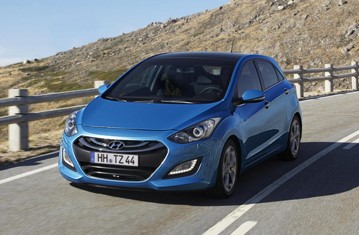
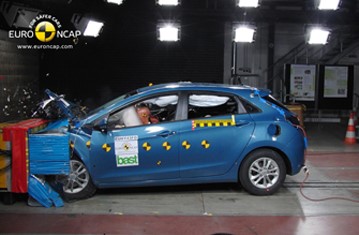
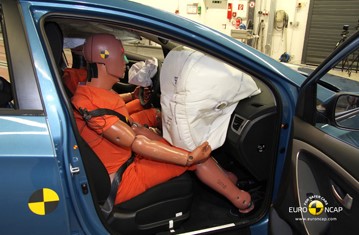


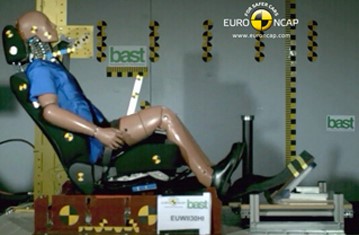
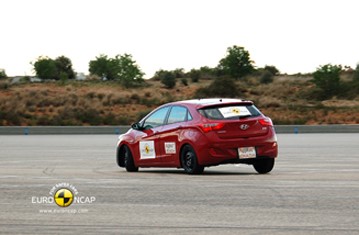




The passenger compartment of the i30 remained stable in the frontal impact. Dummy readings indicated good protection of the knees and femurs of the driver and passenger. Hyundai showed that a similar level of protection would be provided for occupants of different sizes and to those sat in different positions. In the side barrier test, protection of the chest was adequate and that of other body regions was good. In the more severe side pole test, protection of the chest was weak. The seat and head restraint provided good protection against whiplash injuries in the event of a rear-end collision.